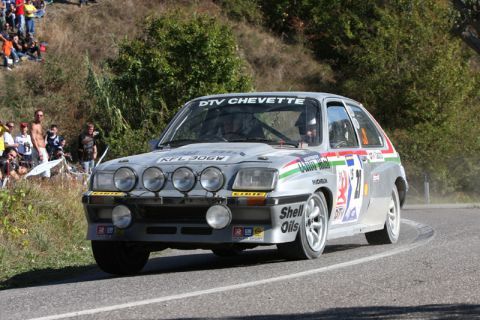Background
Building a works rally car back in the '70s normally meant squeezing your best engine into a small family car, adding big brakes, tweaking the suspension and uprating the gearbox. Ford had the Escort RS, Talbot had the Sunbeam Lotus, Fiat the 131 Abarth and Vauxhall had........ well they didn’t.
This was quickly addressed by the creation of Dealer Team Vauxhall or DTV as it was colloquially known, who were tasked by Vauxhall with turning the family hatchback Chevette into a rally car that could compete with Ford’s Escort RS1800.
DTV set about raiding the Opel/Vauxhall parts bins, out went the road cars small capacity engine, in came the 2279cc slant four from the HC range, but with a bespoke alloy 16 valve head. The standard road car’s axles, brakes and suspension were changed for those from the Kadett C GT/E, with the 5 speed Getrag gearbox and alloys being sourced from the Chevrolet Vega.
Successful though the HS was, it was obvious by 1979 that changes in technology and regulations meant it had to be updated; so it was that the HSR was born. The HSR kept the basic spec of the HS, but got a twin plate clutch and revised 'five link' rear axle location. The bodywork underwent heavy revisions which saw many steel body panels with lightweight fibreglass ones including the addition of a big curved wing body kit, which resulted in the car being colloquially known as 'Plastic Fantastic'.
Taking a win on its international debut, the HSR went on to become arguably the best tarmac car of the early 80s, continuing to win well into the era of the Group B supercars.
Technical
Engine : Four-cylinder, 2.3ltr, twin cam, 16 valve in-line, Longitudinally mounted in the front of the car, 246 bhp
Induction : Twin Webber Carburettors, Normally Aspirated

